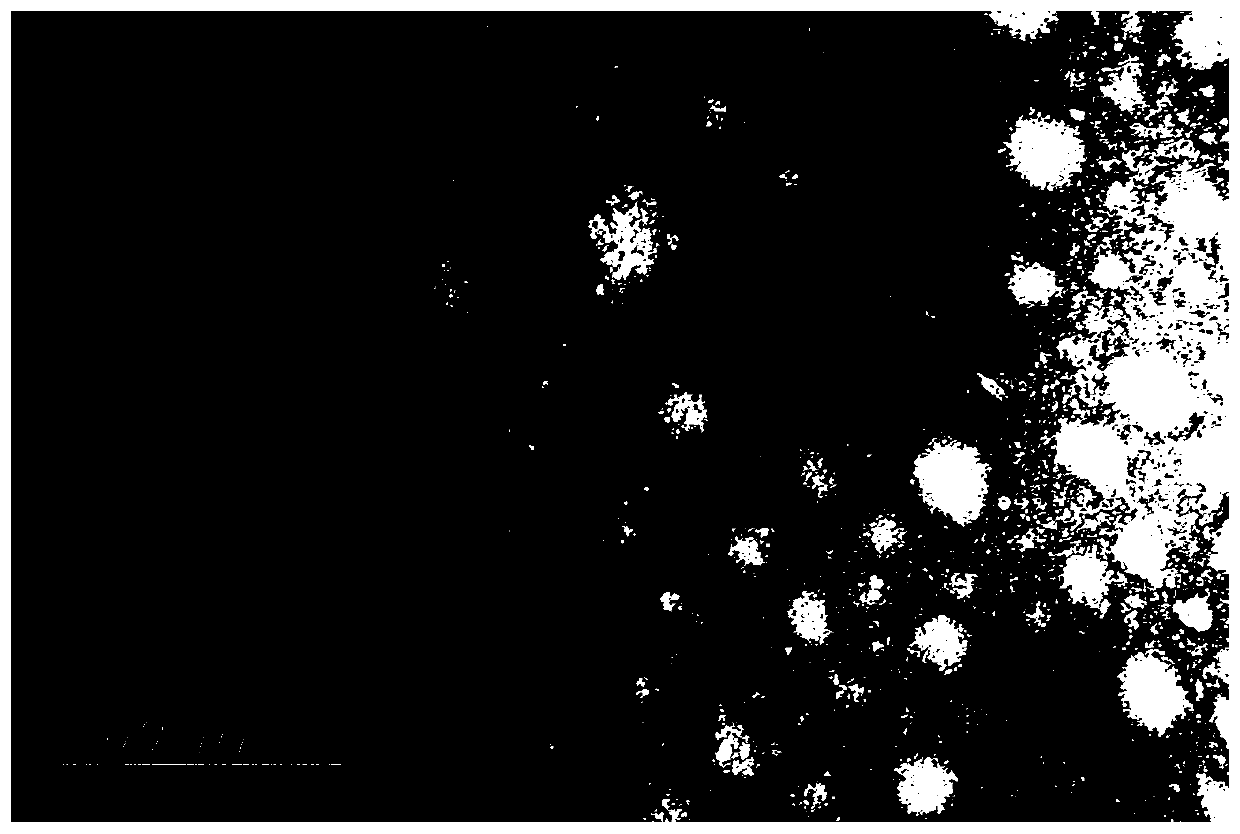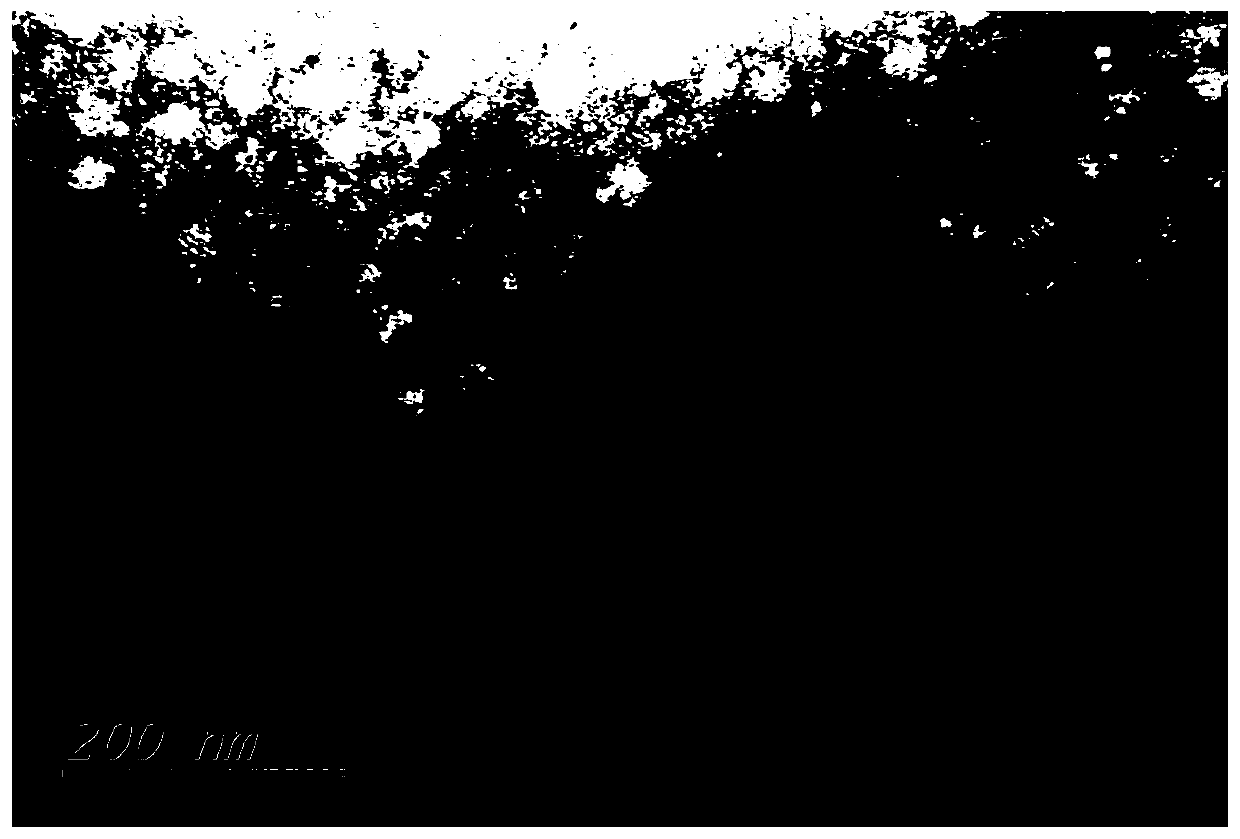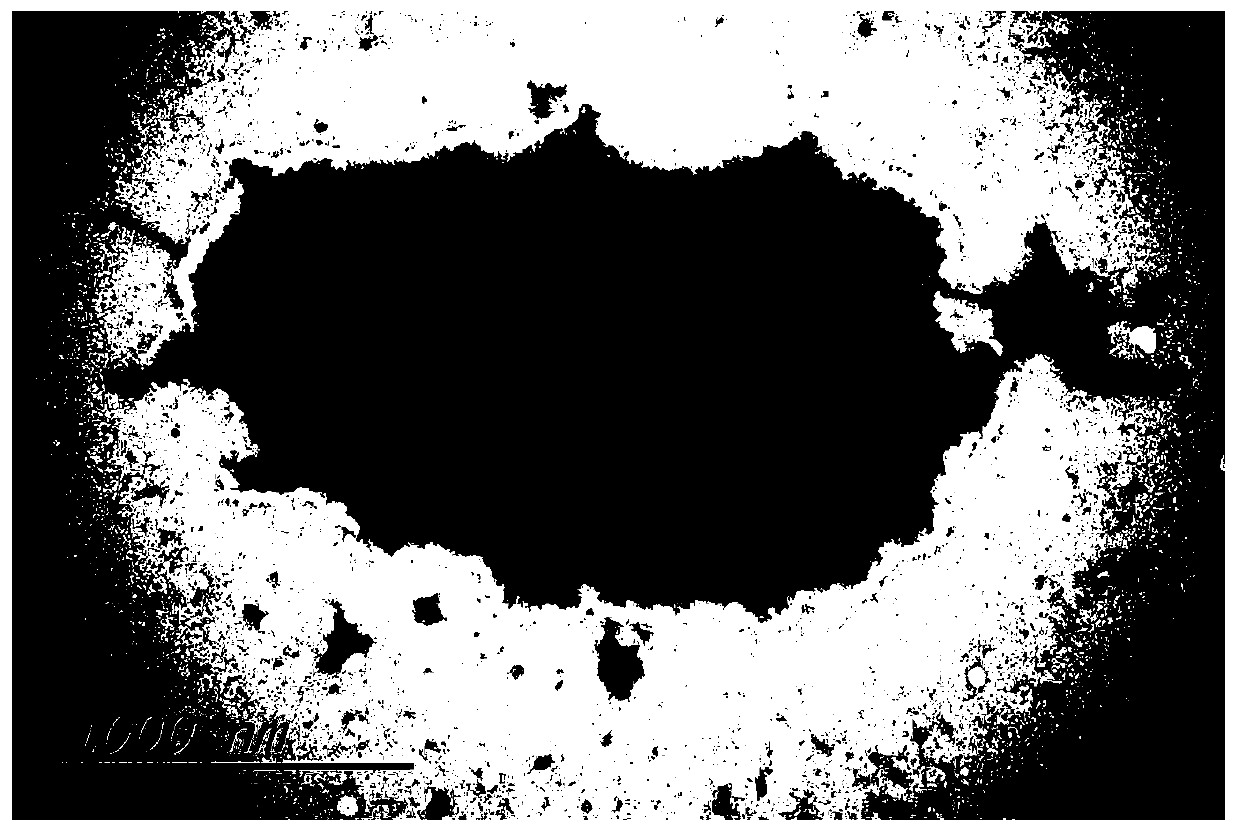Preparation method of bacteriophage transmission electron microscope specimen
A technique of transmission electron microscopy and bacteriophage, which is applied in material analysis using radiation diffraction, material analysis using radiation, and material analysis using wave/particle radiation, etc. The effect of saving manpower, material resources and cost, and high throughput
- Summary
- Abstract
- Description
- Claims
- Application Information
AI Technical Summary
Problems solved by technology
Method used
Image
Examples
Embodiment 1
[0024] A method for preparing a bacteriophage transmission electron microscope specimen is further illustrated by taking plague phage as an example, and specifically includes the following steps:
[0025] (1) After the purified wild plague phage stored at 4°C was rejuvenated at 28°C, 220rpm, and 24h, the titer was measured, and the titer reached 10 8 Above, proceed to the next step of specimen preparation.
[0026] (2) Spread the host bacteria EV76 (plague vaccine strain) on a double-layer plate, incubate at 28°C for 1.5 hours, add 15 μL of the above-mentioned phage dropwise, and after it is completely absorbed, continue to culture at 28°C to make the phage plaques clear.
[0027] (3) Use a 10 μL pipette tip to pick out the upper layer of agar containing phage plaques and put it into a 1.5ml centrifuge tube with 200 μL of normal saline (or SM solution) to mash, place at 4°C for 2 hours, 5000 rpm, 2 minutes, and absorb the supernatant.
[0028] (4) Prepare a piece of parafilm ...
Embodiment 2
[0034] A method for preparing a bacteriophage transmission electron microscope specimen is further illustrated by taking Escherichia coli ATCC8739 as an example, and specifically includes the following steps:
[0035] (1) Measure the titer of the purified coliphage stored at 4°C after rejuvenation at 37°C, 220rpm, and 24h, and the titer needs to reach 10 8 Above, the next step of specimen preparation can be carried out.
[0036] (2) Spread the host bacteria (Escherichia coli ATCC8739) on a double-layer plate, incubate at 37°C for 3 hours, add 15 μL of the above-mentioned phages dropwise, and continue to culture at 37°C until the phage plaques become clear.
[0037] (3) Use a 10 μL pipette tip to pick out the upper layer of agar containing phage plaques and put it into a 1.5ml centrifuge tube with 200 μL of normal saline (or SM solution) to mash, place at 4°C for 2 hours, 5000 rpm, 2 minutes, and absorb the supernatant.
[0038] (4) Prepare a piece of parafilm or clean film gl...
Embodiment 3
[0044] A method for preparing a bacteriophage transmission electron microscope specimen is further illustrated by taking Staphylococcus aureus ATCC25923 as an example, specifically comprising the following steps:
[0045] (1) Measure the titer of the purified Staphylococcus aureus phage stored at 4°C after rejuvenation at 37°C, 220rpm, and 24h, and the titer needs to reach 10 8 Above, the next step of specimen preparation can be carried out.
[0046] (2) Spread the host bacteria (Staphylococcus aureus ATCC25923) on a double-layer plate, incubate at 37°C for about 1 to 3 hours, add 15 μL of the above-mentioned phage dropwise, and continue to culture at 37°C until the plaque becomes clear after it is completely absorbed.
[0047] (3) Use a 10 μL pipette tip to pick out the upper layer of agar containing phage plaques and put it into a 1.5ml centrifuge tube with 200 μL of normal saline (or SM solution) to mash, place at 4°C for 2 hours, 5000 rpm, 2 minutes, and absorb the supernata...
PUM
 Login to View More
Login to View More Abstract
Description
Claims
Application Information
 Login to View More
Login to View More - R&D
- Intellectual Property
- Life Sciences
- Materials
- Tech Scout
- Unparalleled Data Quality
- Higher Quality Content
- 60% Fewer Hallucinations
Browse by: Latest US Patents, China's latest patents, Technical Efficacy Thesaurus, Application Domain, Technology Topic, Popular Technical Reports.
© 2025 PatSnap. All rights reserved.Legal|Privacy policy|Modern Slavery Act Transparency Statement|Sitemap|About US| Contact US: help@patsnap.com



